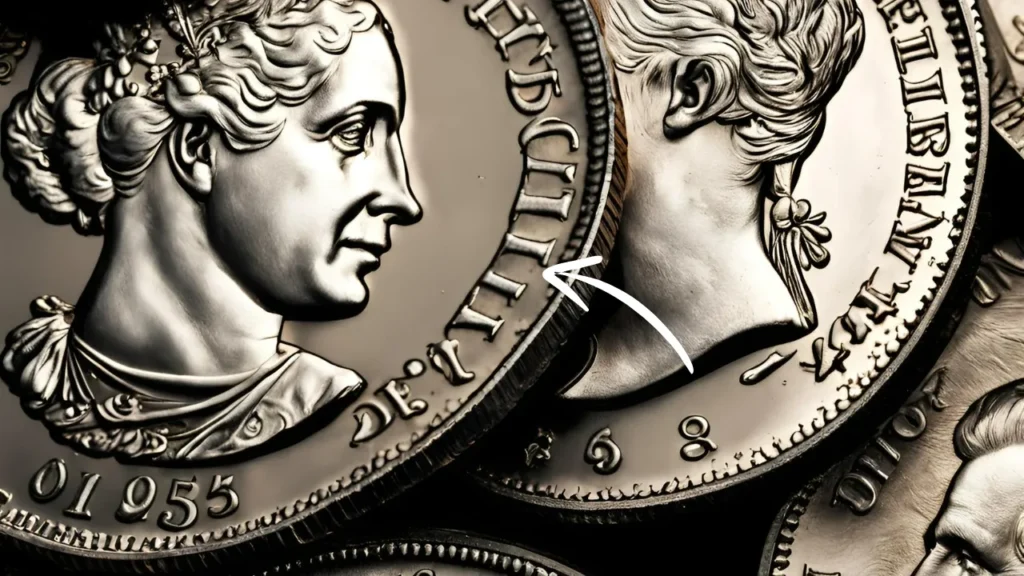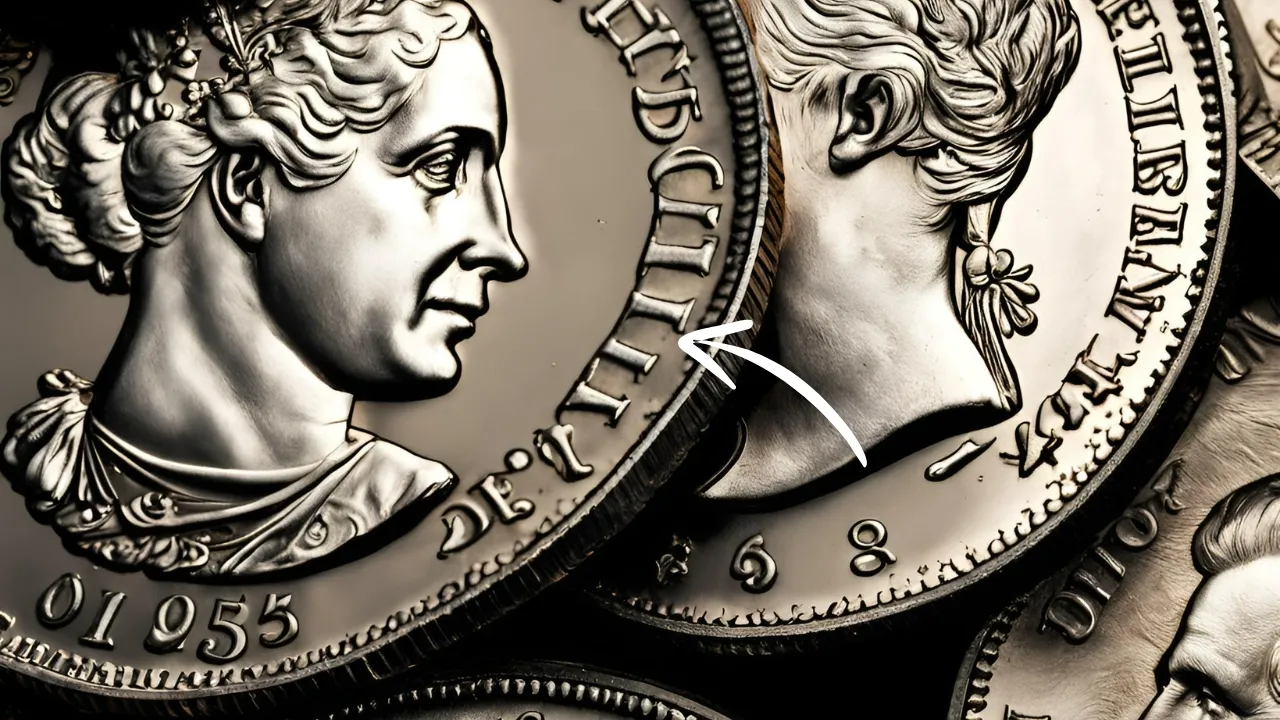In the numismatist world, there are some coins whose historical importance is exceeded only by their extraordinary monetary value.
Of these, seven rarities in dimes and one Bicentennial Quarter have captured the curiosity of collectors and coin casual observers.
These coins, which still may be in circulation, stand as an intriguing blend of antiquity, design, and possible wealth.
The 1894-S Barber Dime: The 1894-S Barber Dime:
The 1894-S Barber Dime is one of the most sought-after coins in the numismatic history of the United States.
Among 24 minted and only as many as 9 are known to survive to this day, the dime is legend.
Historical Context: Historical Context:
Minted in San Francisco in a year of economic crisis, the exact reason for its small run is still a mystery.
Speculations range from they were hit as a test dummy and another is they were conceived for unique exhibition.
Value and Rarity: Value and Rarity:
The 1894-S Barber Dime has been sold for hundreds of thousands of dollars at recent auctions. Its extreme rarity and the enigma surrounding its creation contribute to its astronomical value.
Identifying Features: Identifying Features:
Look for the “S” mint mark below the wreath on the reverse side. The obverse features Liberty’s head facing right, designed by Charles E. Barber.
The 1916-D Mercury Dime: A Collector’s Dream
The 1916-D Mercury Dime, struck in Denver, is one of the scarcer numismatic coins that can be found on the market today.
Historical Significance: Historical Significance:
The year 2010 was the year introduction of the Mercury Dime design, replacing the traditional Barber Dime. The Denver mint produced only 264,000 of these coins, making it exceptionally rare.
Value and Collectibility: Value and Collectibility:
A “mint” 1916-D Mercury Dime can sell for more than $100,000 at auction. Even in circulated condition, these dimes are valuable, with prices ranging from $1,000 to $10,000 depending on their state.
Key Identifiers: Key Identifiers:
Search for the unique “D” mint stamp on the reverse, at the base of the coin. The obverse features the iconic “winged Liberty” design, often mistaken for the Roman god Mercury.
The 1873-CC Seated Liberty Dime: A Carson City Rarity
The 1873-CC Seated Liberty Dime, struck in Carson City, Nevada, is a sought-after item among coin collectors.
Historical Context: Historical Context:
Operation of the Carson City mint, which ran from 1870 to 1893, resulted in relatively small numbers of coins, which means the vast majority of its issues are rare and desirable currently.
Rarity and Value: Rarity and Value:
One, with a population of only 12,400 minted and even fewer living today, a fine, surviving 1873-CC Seated Liberty Dime can be worth more than $50,000.
Distinguishing Features: Distinguishing Features:
Search for “CC” mint mark on the reverse, under wreath. The obverse features Liberty seated on a rock, holding a shield.
The 1975 No-S Roosevelt Dime: A Modern Rarity
In contrast to its somewhat-more-ancient siblings, the 1975 No-S Roosevelt Dime is a contemporary rariety, a product of a mint error.
The Error: The Error:
San Francisco proof coins should have an “S” mint mark, however, a few 1975 proof dimes were manufactured without this important designation.
Value: Value:
Because of its rarity, a perfectly circulated 1975 No-S Roosevelt Dime can sell for more than $500,000.
How to Identify: How to Identify:
Check proof sets from 1975. The dime should have a polished appearance but not have the “S” mint mark under Roosevelt’s bust.
The 1982 No-P Roosevelt Dime: Another Modern Mistake
Similar to its 1975 counterpart, the 1982 No-P Roosevelt Dime resulted from a minting error at the Philadelphia facility.
The Mistake: The Mistake:
For the first time since 1980, when Philadelphia began adding “P” mint marks to coins other than pennies, a batch of dimes was struck without the mark.
Market Value: Market Value:
Although not quite as desirable as some of the older rarities, an otherwise still very good example of a 1982 No-P Roosevelt Dime can still sell for a few thousand dollars.
Identification Tips: Identification Tips:
Look for 1982 dimes that lack a mint mark. Remember, it’s the absence of the “P” that makes this coin special.
The 1968 No-S Roosevelt Dime: A Proof Set Anomaly
The 1968 No-S Roosevelt Dime is another rarities of modern times that are intriguing to collectors.
Background: Background:
Similar to the 1975 coin, this dime was struck from a proof set but was missing the San Francisco mintmark.
Value in the Market: Value in the Market:
In great shape, a 1968 No-S Roosevelt Dime is worth more than $20,000.
How to Spot It: How to Spot It:
Check 1968 proof sets for a dime lacking the “S” mint mark. The coin should have the characteristic proof finish.
The 1942/1 Mercury Dime Overdate: A Wartime Curiosity
The 1942/1 Mercury Dime Overdate is a unique instance of a minting fault at a time of significant historical turmoil.
Historical Context: Historical Context:
As the U.S. entered World War II, a 1941 die was mistakenly used to strike some 1942 dimes, resulting in a visible overdate.
Collector’s Value: Collector’s Value:
The 1942/1 Mercury Dime can range from $500 to over $10,000, depending on the condition.
Identifying Marks: Identifying Marks:
Look closely at the date. You will be able to make out traces of a “1” beneath the “2” in 1942, for instance.
The Bicentennial Quarter: A Modern Treasure
Although not as ancient as the rarities now in existence the Bicentennial Quarters have, some of them have now become in great demand because of rare events.
Historical Significance: Historical Significance:
- Minted in 1975 and 1976 to mark the 200th anniversary of America’s birth, these quarters bear the colonial drummer with a dual-date “1776-1976” on the reverse.
Valuable Variations: Valuable Variations:
- Although most Bicentennial Quarters, despite their monetary worth, can be quite valuable, some rare forgeries of them can be highly collectible:.
- Silver Composition: Some were minted in 40% silver instead of the standard copper-nickel clad. These are more valuable, especially in uncirculated condition.
- Minting Errors: Quarters with double-strike errors and/or struck on an incorrect planchet are commonly valued in the thousands, if not millions, to the right collector.
- High-Grade Specimens: Even uncirculated, pristine, Bicentennial Quarters can be worth substantially more than their nominal value.
Value Range: Value Range:
The majority of the circulating Bicentennial Quarters are face value 25 cents, but rare varieties have been sold in the range of a few hundred dollars up to claims of millions dollars for very rare errors.
How to Identify Valuable Specimens: How to Identify Valuable Specimens:
- Check the composition: Silver quarters will not have any copper visible on the edge.
- Search for visible minting defects, such as double strikes or off-center strikes.
- Scrutinize the coin’s condition; coins that are uncirculated without wear are of greater value.
The Thrill of the Hunt

There is genuine appeal not only in the likely monetary value of these rarities, but in the excitement of ther quest.
Every handful of change could potentially contain a small fortune, a piece of history waiting to be discovered.
This opportunity transforms commonplace transactions into treasure hunts, and introduces a sense of adventure to the everyday task of handling cash.
For coin collectors, these are not merely monetary worth. They are the touchable evidences of the past, that is, with its own history to be told.
For example, the 1894-S Barber Dime will be accompanied by anecdotes of a mint director’s daughter buying one on ice cream, without regard to its worth.
True, or falsely, such legends enhance, if they do not create, the aura and attractiveness of such numismatic artifacts.
Preservation and Authentication
If you think you have made one of these rarities, it is important to handle and authenticate cautiously.
Coins should be clutched at the edges and kept in suitable containers to avoid damage.
Professional grading services can validate your find and provide a sealed holder in which the coin is protected both during certification of its grade and authenticity.
The Future of Coin Collecting
As we move towards an increasingly digital economy, physical coins may become less common in everyday transactions.
This change may, conceivably, turn today’s circulated coins to tomorrow’s rarities.
For instance, the Bicentennial Quarter, though ubiquitous today, may one day be coveted as a specimen in particular, especially rare and extremely high grade specimens.
Especially, the emergence of digital currency does not stop the passion for coin collection.
On the other hand, it has led to a renewed interest in the tangible, historical types of money.
Internet marketplaces and forums have opened up possibilities for collectors to communicate, exchange, and disseminate information in such a way that may contribute to new finds of rare coins.
Rare Dimes and a Bicentennial Quarter each worth
The world of rare coins, exemplified by these seven dimes and the Bicentennial Quarter, offers a unique blend of history, art, and potential financial reward.
Whether you’re a serious collector or simply curious about the change in your pocket, the possibility of finding one of these numismatic treasures adds an element of excitement to everyday life.

